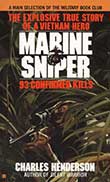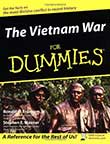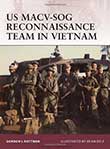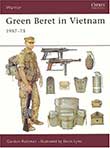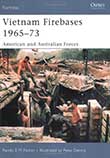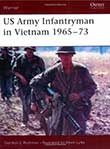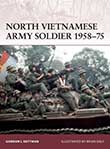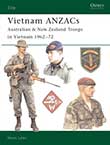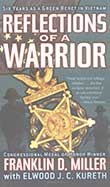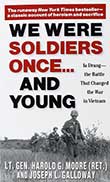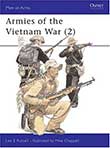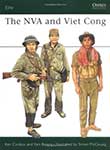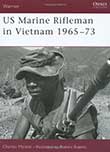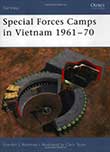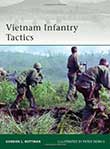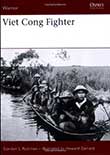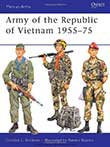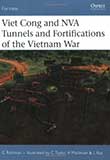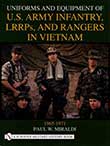

Sometimes truth really is stranger than fiction. The life of Carlos N. Hathcock II reads like the plot summary of a summer block buster movie. Hathcock resurrected the shunned and despised art of sniping and held off an entire company of enemy soldiers for five days with only the assistance of his spotter. He infiltrated deep behind enemy lines to assassinate an enemy commander with a single shot and then escaped undetected. Later, he sacrificed his life and body to save his fellow soldiers. He was feared and respected by his comrades and adversaries alike, he never gave up and fought incredible odds time and again and each time surmounted them.
The events are all true, despite the sensational sound of them. Marine Sniper: 93 Confirmed Kills is a biography of a two times Vietnam War veteran who, despite the extraordinary and dangerous path his life took, didn’t succumb to gun fire, mines, bombs or knives. In the end, frustrated at a body that could no longer do the things he loved to do, confined to wheelchairs and hospital beds, Carlos Hathcock died of multiple sclerosis twenty years after he was unable to serve his country as a Marine any more, and after twenty years of distinguished service.
Marine Sniper: 93 Confirmed Kills follows Hathcock’s life from his enrolment in to the Marine Corps at the age of 17 through to a little after his forced retirement at the age of 37. For the most part, it is an enjoyable read and, although biographical, still manages to incorporate large doses of suspense and conflict.
The Vietnam War was unlike any war the United States ever fought. Unlike the previous wars of the twentieth century, the Vietnam War left the United States divided, and it continues to influence U.S. domestic and foreign policy. Without question, the Vietnam Syndrome that emerged after the war's end altered the policies of Presidents Jimmy Carter and Ronald Reagan, and the lessons learned from the war were applied to later conflicts in the Persian Gulf.
The Vietnam War story is one that has never been fully understood and probably never will be explained to the satisfaction of those who experienced it – and it will continue to spark debate and controversy for each new generation. The Vietnam War For Dummies attempts to tell that complicated story in a way that is easily accessible to everyone. If you've never read much about the Vietnam War, this book provides a general overview that covers all the major players and significant turning points and events of the war. If you're a history buff, this book can serve as a compact reference guide to the major subjects of the war.
The Vietnam War For Dummies covers the following topics and more:
- The events that led up to the war, from the beginning of the Cold War to when U.S. troops moved into Vietnam
- A detailed examination of the conflict between North and South Vietnam
- How U.S. presidents handled Vietnam, from Eisenhower to Nixon
- Analyses of the major battles of the war, including the Tet Offensives and the Fall of Saigon
- The effect of the war on American life and culture, including an exploration of the protest movement
- Thorough analyses of U.S. and Vietnamese battle tactics
- Top Ten lists debunking myths surrounding the war and highlighting issues and concerns that have arisen from the war
Remember that having an understanding of the Vietnam War means knowing that its history is based on perspectives. For any one book that argues a point a specific way, at least two other books will interpret that point another way. You can use The Vietnam War For Dummies as a guide for beginning your examination of one of the most important events in U.S. history.
Osprey's study of the Military Assistance Command of the Vietnam War (1955-1975). In 1964 Military Assistance Command, Vietnam, activated a joint unconventional task force known as the Studies and Observation Group--MACV-SOG. As a cover its mission was to conduct analysis of lessons learned in combat involved all branches of service. SOG's real mission was to conduct covert strategic reconnaissance missions into Laos, Cambodia, and South Vietnam as well as sabotage and 'Black' psychological operations. Ground, air, and naval assets were employed to insert, collect, extract, and otherwise support these operations. Drawing on detailed, first-hand accounts of the experiences of the service, including action on operations, this book will shed light on one of the most crucial units of the Vietnam War.
Vietnam was the US Special Forces' most complex and controversial mission, one that began in 1957 and ended in 1973. Camp strike forces, mobile strike forces, mobile guerrilla forces, special reconnaissance projects, training missions and headquarters duty provided vastly differing experiences and circumstances for SF soldiers. Other fluctuating factors were the terrain, the weather and the shifting course of the Vietnam War (1955-1975) itself. Gordon Rottman examines the training, life, weapons and combat experiences of the Special Forces soldier in this challenging environment.
Impressive in terms of scale and structure, the Fire Support Base became a dominant element in ground maneuver during the Vietnam War. Initially a mobile base, it soon evolved into a semi-permanent and more sophisticated fortress as a result of enemy counterattacks and bombardments.
As a consequence, the majority of US and other allied troops found themselves pinned down in defensive or support roles, rather than being free to conduct 'search and destroy' or other mobile missions. Thus, the first and foremost function of the Fire Support Base was defensive. Troops, machine guns, mortars, artillery, surveillance radars, and command centers all had to be dug into bunkers and fire trenches by nightfall of the first day. Around these positions there would be deep belts of barbed wire, generously scattered with several different types of mines and even, in a few cases after 1967, with a brand new series of electronic sensors to detect and locate the enemy at a distance.
With the benefit of the on-site howitzers, the FSB could also deliver offensive high volume fire, reaching as far as 14,600m and eliminating enemy firing sites, supporting friendly infantry operations, or simply participating in fire missions where exact targets were not known. In fact, the fort offered such a degree of support and protection that ground maneuver was eventually hampered by the troop's reluctance to leave the comfort and safety of the FSB.
With a description of the design, development and operational history of the Fire Support Base, this book provides the key to understanding one of the main assets of US battle strategy in the Vietnam War.
This book tells the compelling story of the average US infantryman in the Vietnam War (1955-1975). Beginning with conscription, enlistment, Basic Training, and Advanced Individual Training at the Armed Forces Induction Center at Fort Polk (the infamous “Tigerland”), it goes on to explore the day-to-day realities of service in Vietnam, from routine tasks at the firebase to search-and-destroy missions, rocket attacks, and firefights in the field. Weaponry, clothing, and equipment are all described and shown in detailed color plates. A vivid picture of the unique culture and experiences of these soldiers emerges – from their vernacular to the prospect of returning to an indifferent, if not hostile, homeland.
The North Vietnamese Army is often forgotten by the histories of the Vietnam War (1955-1975). Commonly mistaken for the locally raised Viet Cong guerrillas, the NVA was in fact an entirely different force for the Democratic Republic of Vietnam. After first supporting the VC in the Republic of Vietnam in 1958, the NVA entered into their own violent armed struggle as the war escalated. Entire divisions and vast numbers of NVA troops were sent south, conducting large-scale operations in a conventional war fought almost entirely by the NVA, and not the VC, as is often believed. Despite limited armor, artillery and air support, the NVA were an extremely politicized and professional force with strict control measures and leadership concepts - soldiers were expected to be totally committed to the cause, and to sacrifice all to ensure its success. Gordon Rottman follows the fascinating life of the highly motivated infantryman from conscription and induction through training to real combat experiences. Covering the evolution of the forces from 1958 onwards, this book takes an in-depth look at the civilian and military lives of the soldiers, while accompanying artwork details the uniforms, weapons and equipment used by the NVA in their clash against America and her allies.
The part played by Australian and New Zealand troops in the Vietnam War (1955-1975) is sometimes overlooked; but it is generally accepted that the 'Diggers' and 'Kiwis' were among the most effective and professional troops involved. Drawing upon the ANZACs' long experience in the jungles of South East Asia, the men of the Task Force used their expertise in patrol tactics to great effect to frustrate Viet Cong operations. Meanwhile the ANZACs’ small and isolated adviser teams spent ten years passing on their skills all over South Vietnam, and in the process four were awarded the supreme decoration for valour - the Victoria Cross. This book pays tribute to their military prowess, and describes and illustrates their uniforms and equipment in unprecedented detail.
PFC Franklin Miller arrived in Vietnam in March 1966, and saw his first combat in a Reconnaissance Platoon. So began an odyssey that would make him into one of the most feared and respected men in the Special Forces elite, who made their own rules in the chaos of war.
In the exclusive world of the Military Assistance Command, Vietnam, Studies and Observation Group, Miller ran missions deep into enemy territory to gather intelligence, snatch prisoners, and to kill. Leading small bands of battle-hardened Montagnard and Meo tribesmen, he was fierce and fearless -- fighting army policy to stay in combat for six tours. On a top-secret mission in 1970, Miller and a handful of men, all critically injured, held off the NVA in an incredible Alamo-like stand -- for which he was awarded the Congressional Medal of Honor. When his time in Southeast Asia ended, he had also received the Silver Star, two Bronze Stars, an Air Medal, and six Purple Hearts. This is his incredible story.
Each year, the Commandant of the U.S. Marine Corps selects one book that he believes is both relevant and timeless for reading by all Marines. The Commandant's choice for 1993 was We Were Soldiers Once . . . and Young.
In November 1965, some 450 men of the 1st Battalion, 7th Cavalry, under the command of Lt. Col. Hal Moore, were dropped by helicopter into a small clearing in the Ia Drang Valley. They were immediately surrounded by 2,000 North Vietnamese soldiers. Three days later, only two and a half miles away, a sister battalion was chopped to pieces. Together, these actions at the landing zones X-Ray and Albany constituted one of the most savage and significant battles of the Vietnam War.
How these men persevered—sacrificed themselves for their comrades and never gave up—makes a vivid portrait of war at its most inspiring and devastating.
General Moore and Joseph Galloway, the only journalist on the ground throughout the fighting, have interviewed hundreds of men who fought there, including the North Vietnamese commanders. This devastating account rises above the specific ordeal it chronicles to present a picture of men facing the ultimate challenge, dealing with it in ways they would have found unimaginable only a few hours earlier. It reveals to us, as rarely before, man's most heroic and horrendous endeavor.
On March 8th, 1965, some 3,500 US Marines, the first US combat troops to arrive in Vietnam, landed in Da Nang to defend the US air base there. On June 8th, following further reinforcements, General Westmoreland authorized his troops to begin "offensive patrolling." Lee Russell's follow-up to Men-at-Arms 104 focuses in finer detail on the uniforms and insignia of the US Army and Marines, the ARVN and the NVA. The book is packed with superbly detailed black and white photographs of the forces active in the Vietnam War, and Mike Chappell's excellent illustrations provide key reference material for the contemporary uniforms and battledress.
In 1940 Japan placed Vietnam under military occupation, restricting the local French administration to a figurehead authority. Seizing the opportunity, the Communists organised a Vietnamese independence league, the Viet Minh, whose armed forces became known as the PAVN (more commonly known to the West as the Vietcong, or NVA) and prepared to launch an uprising against the French at the war's end. This text details the history, organisation and uniforms of the People's Army of Vietnam from its origins in the fight against colonialism, through two separate wars against the US and Khmer Rouge, to its role in the modern era.
This volume provides an in-depth look at the experience of the ordinary US marine 'grunt' in Vietnam. Organisation of the corps, weaponry, equipment, uniforms, training and medical arrangements are all discussed. However, where this book differs from other similar works is not only in the detail that it goes into but also in the unifying theme of examining all these differing aspects of marine life from the point of view of a soldier serving in the conflict. The author, Charles Melson, actually served in the Vietnam War (1955-1975), and it is this personal experience that allows him to provide such a unique angle on the subject.
In 1961 US Special Forces units began entering remote areas of Vietnam dominated by the Viet Cong. Their task was to organize local defense and strike forces aimed at stopping the enemy from gaining further control of such areas. The Green Berets set up fortified camps from which indigenous troops defended local villages and attacked and harassed the enemy. How these camps were constructed, developed, and defended is documented here for the first time. This book also covers the weapons, barriers, and obstacles used in these camps, providing specific examples of camp design, and details how they withstood the test of battle against a determined and resourceful enemy.
Osprey's study of the evolving US, Viet Cong and NVA tactics at battalion level and below throughout the Vietnam War (1955-1975). Beginning with a description of the terrain, climate and the unique nature of operations in this theater of war, author Gordon Rottman, a Vietnam veteran himself, goes on to explain how unit organization was broken down by combatant forces and the impact this had on the kind of tactics they employed. In particular, Rottman highlights how units were organized in reality on the battlefield as opposed to their theoretical tables of organization.
US tactics included the standard US tactical doctrine as prescribed by several field manuals and in which leaders and troops were rigorously trained. But it also reveals how many American units developed innovative small unit tactics specifically tailored to the terrain and enemy practices. Key Free World Forces' tactics that will be discussed in detail include Command and Control, Combat Patrols and Ambushes, Counter-Ambushes, Defensive Perimeters, and Offensive Operations (sweeps, search and destroy, clear and secure). In contrast, this book reveals the tactics employed by Viet Cong and NVA units including their own Offensive Operations (attacking bases and installations, attacking moving forces), Reconnaissance, Movement Formations and Security, and Ambushes.
Osprey's study of the Viet Cong fighters of the Vietnam War (1955-1975). An enemy in the shadows, the Viet Cong was the military arm of the National Liberation Front, the Communist Party of the Republic of Vietnam. Often generally thought of as local guerrillas, they were also an important part of the North Vietnamese Army regular cadres.
Packed with emotive and rare photographs, this book not only analyzes the skills and tactics of these fascinating fighters, but also takes a look at their social origins to interpret how this affected their behavior as warriors.
Rottman's latest title discusses the original reorganization of Vietnam forces, from the original colonial structure implemented by the French into the first national army of Vietnam. Complete with a detailed history of the command structure and orders of battle, Rottman sheds light on the little known divisional histories of the army through rare, original source material. Moreover, the author examines in detail the evolution of such key units as armoured forces, ranger commands as well as combat unit organization. This, together with a detailed analysis of the experiences of the typical rank and file soldier as well as officer corps, provides a concise and and in-depth history of an army that is too often neglected or quickly judged.
Field fortifications and tunnel systems are typically thought of as defensive and active protective measures, but the VC/NVA also employed them offensively. It was common for extensive field works to be constructed to support assaults and sieges on US fire-support bases and remote camps. Their tactics reflected attempts to counter the massive firepower they faced: when directly engaging the enemy they employed “hugging” tactics (moving in and remaining closely engaged, even intermingling units, to prevent the enemy from bringing his artillery and close air support to bear). Their field works included defended villages, base camps, fortified complexes, hilltop defenses, trench systems, individual fighting positions, crew-served weapon positions, bunkers, caches, and extensive tunnel systems. Camouflage and deceptive measures, and the employment of obstacles and booby traps went hand-in-hand with such field works. This book examines these unique fortifications.
This new, extensively researched volume is a comprehensive guide to the history, development, wear, and use of uniforms and equipment during America's involvement in the Vietnam War. Included are insignia, headgear, camouflage uniforms, experimental items, modified items, flak armor, boots, clothing accessories, paper items and personal items from the year 1965 to 1971, all examined in great detail. Using re-constructed photos the author recreates the look and appearance of the American Soldier in Vietnam. Rangers, medics, scouts, RTOs, machine gunners, Pathfinders, and riflemen are all here and accompanied by detailed text. For the first time, see easily recognizable dating system used by the U.S. Government supply system to date the items on the manufacturer tag. A helpful appendix shows, for the first time ever, all forms of post war gear such as ALICE and camouflage like BDUs and the Rapid Deployment Force pattern, and all those that were never used in South East Asia during the Vietnam War. Included is also an easy to follow, detailed description of each item along with a comparison showing the actual wartime produced item side by side with the undesirable so the collector/Historian/Re-Enactor will never make the mistake of utilizing Post War Produced items again. Packed with over 500 detailed color photographs, and over 100 never before seen original photos from veterans, as well as many close-ups, this book fills an important gap in the collectors reference library and will be invaluable for collectors, living historians, re-enactors, modelers, curators, and artists alike.
General Vespasianus occupies Rome
Benedictus IX and Silvester III and names Bishop Siutger, Pope Clemens II
Synod of Sutri: German King Henry III removes Popes Gregory VI
Richard the Lionhearted captured in Vienna
Pope Nicolaas V named Utrechts Bishop Rudolf of Diepholt, Cardinal
English fleet and Earl Robert Dudley van Leicester reach Vlissingen
Virginia Company settlers leave London to establish Jamestown, Virginia
Corporation Act enforced in England
1st jury trial in Delaware; Marcus Jacobson condemned for insurrection and sentenced to flogging, branding and slavery
Frederik van Brandenburg flees Schweiben
Peter the Great ordered Russian New Year changed-Sept 1 to Jan 1
England declares war on Netherlands
1st successful US cotton mill to spin yarn (Pawtucket, RI)
Louisiana Purchase formally transferred from France to US for $27M
Missouri imposes a $1 bachelor tax on unmarried men between 21 and 50
Franz Schuberts "Ballet-Musik aus Rosamunde, " premieres in Vienna
England, France, Prussia, Austria and Russia recognize Belgium
Hawaiian post office established
SC votes 169-0 for Ordinace of Secession, 1st state to secede
Battle of Dranesville, Virginia
Brigadier General Nathan B Forrest occupies Trenton, Kentucky
De Clear-Alkmaar railway opens
Tom Edison privately demonstrated incandescent light at Menlo Park
International cantilever railway bridge opens at Niagara Falls
Strongman Louis Cyr withstands pull of 4 horses
Phileas Fogg completes around world trip, according to Verne
Pneumatic automobile tire patented, Syracuse, New York
1st state anti-lynching statue approved, in Georgia
Day Six 1T Aus vs. Eng Australia need 177 to win, all out 166
Giacobini discovers a comet (will be 1st comet visited by spacecraft)
Venezuela (under vice-pres Gomez) attacks Dutch fleet
Explosion at Yolande Alabama, coal mine kills 91
Russian troops overrun Qom, Persia
Russian secret police in Czech forms under Felix Dzerzjinski
US House of Representatives restricts immigration
Bob Hope became an American citizen
AL votes to return to best-of-7 World Series, while NL votes best-of-9 Judge Kenesaw Mountain Landis casts deciding vote for best-of-7
14 Republics form Union of Soviet Socialistic Republics (USSR)
Polish parliament selects Stanislaw Wojcieckowski as President
Adolf Hitler freed from jail early
Cards trade Rogers Hornsby to Giants for Frankie Frisch and Jimmy Ring
Pope Pius XI convicts fascist pursuit in Italy
Ethel Barrymore Theater opens at 243 W 47th St, New York City
Heinie Wagner replaces Bill Carrigan as Red Sox manager
Mount Davidson dedicated as a SF city park
Queensland all out 74 vs. Victoria, Ironmonger (age 50) 7-13
Bolivia and Paraguay sign weapon cease fire
Pope Pius XI publishes encyclical Ad Catholici Sacerdotii
Vladimir K Zworykin (Penn) receives patent on Iconoscope TV system
Radio Australia begins overseas shortwave service
Connie Mack acquires controlling interest in the Athletics for $42,000
Japanese troops lands on Mindanao
1st Japanese bombing of Calcutta
"International" is no longer USSR National Anthem
Archbishop De Young and Bishop Huibers condemn black market
Battle of Bastogne, Nazis surround 101st Airborne (NUTS!)
Bishop forbids membership in non Catholic unions
Terence Rattigans "O Mistress Mine, " premieres in London
Rationg of auto tires ends in US
Second Chamber accept 2nd Police Action in Indonesia
"Harvey, " starring James Stewart, premieres in New York
KHQ TV channel 6 in Spokane, WA (NBC) begins broadcasting
KID (now KIDK) TV channel 3 in Idaho Falls, ID (CBS) 1st broadcasting
KWTV TV channel 9 in Oklahoma City, OK (CBS) begins broadcasting
Military coup under Colonel Simbolon in Sumatra
Montgomery, Ala, removed race-based seat assignments on its buses
Elvis Presley given draft notice to join US Army for National Service
Jasu Patel takes 9-69, India vs. Australia at Kanpur
D Sjostakovitz opera "Katerina Ismailova, " premieres in Moscow
Osmond brothers debut on Andy Williams Show
Berlin Wall opens for 1st time to West Berliners
Massemba-Debate elected President of Congo-Brazzaville
Trial against 21 camp guards of Auschwitz begins
Levi Eshkol forms Israeli government
Brussels: Nuclear Planning Group established
NBA awards Seattle Supersonics a franchise for 1967-68 season
Nuclear Planning Group forms in Brussels
"Graduate, " starring Dustin Hoffman and Anne Bancroft, premieres
474,300 US soldiers in Vietnam
Ian Anderson and Glenn Cornick form rock group Jethro Tull
Pakistan President Yahya Khan resigns
Neil Simons "Sunshine Boys, " premieres in New York City
AL President Joe Cronin refuses to allow Dick Williams to manage Yankees
Dutch Antillean government of Evertsz forms
Montreal Canadien Henri Richard scores his 1,000th NHL point
Ethiopia becomes socialist one-party state
George Harrison releases his "Dark Horse" album in the UK
Joe Walsh recruited to join Eagles
Pope Paul VI named J Willebrands Archbishop of Utrecht
"Music Is" opens at St. James Theater NYC for 8 performances
1st Space walk made by G Grechko from Salyut
RAF -terrorist Knut Folkerts sentenced to 20 years
USSR formally announces death of Alexei Kosygin
"Dreamgirls" opens at Imperial Theater NYC for 1522 performances
Browns set team records for most fumbles (9) and most turnovers (10)
Doug Small (Winnipeg Jets) ties NHL record scoring at 5 second mark
El Salvador adopts constitution
Guy Lafleur, Montreal, became 10th NHLer to score 500 goals
New York Islanders score their most goals (11) vs. Pittsburgh Penguins
PLO Chairman Yasser Arafat and 4,000 loyalists evacuate Lebanon
33 unknown Bach keyboard works found in Yale library
Denis Potvin passes Bobby Orr as NHL defenseman scorer (916 points)
Howard Cosell retires from television sports after 20 years with ABC
Position of American Poet Laureate established (Robert Warren is 1st)
White teenagers beat blacks in Howard Beach, New York
"Nuts" with Barbra Striesand premieres
76th Davis Cup: Sweden beats India in Gothenburg (5-0)
Dona Paz ferry sinks after crash with oil tanker Vector, 4386 die
Nancy Lopez / Miller Barber wins LPGA Mazda Golf Championship
NBC signs lease to stay in NYC, 33 more years
Premier Ranasinghe Premadasa elected President of Sri Lanka
Premier Lubbers sees CDA-party leader Elco Brinkman as successor
Pentagon warns Saddam that US air power is ready to attack on 1 / 15
Robert F X Sillerman purchases WAFL NY-NJ Knights for $11 million
Soviet Foreign Minister Eduard Shevardnadze resigns
NHL grants permanent membership to Tampa Lightning and Ottawa Senators
Paul Keating installed as Premier of Australia
Northwest and KLM introduce a new joint logo "Worldwide Reliability"
Slobodan Milosevic re-elected President of Serbia
Donald Trump weds Marla Maples
"Paul Roebson" opens at Longacre Theater NYC for 14 performances
American Flight 965 crashes in Columbia, 159 die, 5 survive
